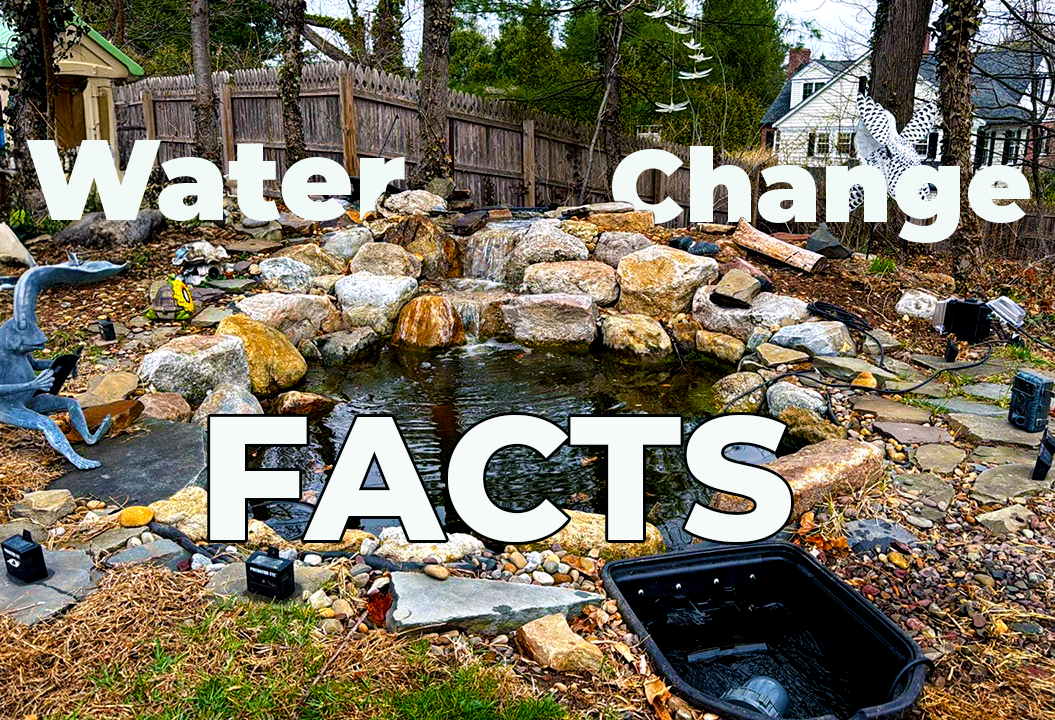5 Reasons a Full Water Change in Spring Could Harm Your Pond
Spring is here, and many New Jersey pond owners are eager to refresh their water after a long winter. But before you drain and refill your pond, think twice! A full water change can disrupt your pond’s ecosystem and cause more harm than good.
Here are five important reasons why a full water change in spring could negatively impact your pond—and what you should do instead.
1. It Destroys Beneficial Bacteria
Your pond’s ecosystem relies on beneficial bacteria to break down organic waste, control ammonia, and maintain healthy water conditions. When you remove all the water, you also remove a significant amount of these bacteria, forcing your pond to start from scratch.
🦠 Why it’s harmful:
- Without bacteria, ammonia and nitrites can spike, stressing or killing fish.
- It can take weeks for beneficial bacteria to reestablish, leaving your pond vulnerable to poor water quality.
What to do instead:
- Perform a partial water change (10-20%) rather than a full replacement.
- Add beneficial bacteria supplements to boost your pond’s natural filtration.
2. It Shocks Your Fish
Fish adjust to the temperature, pH, and mineral balance of their pond over time. A full water change introduces completely new conditions, which can cause temperature shock and osmotic stress.
🐟 Why it’s harmful:
- Sudden water changes can weaken fish immune systems, making them prone to disease.
- If the new water has different pH or hardness levels, it can lead to shock and fish loss.
What to do instead:
- Always match new water temperature to the pond’s existing water before adding it.
- If your pond needs fresh water, gradually add small amounts over several days.
3. It Encourages Excessive Algae Growth
Believe it or not, a full water change can trigger algae blooms! When you replace all the water, you reset nutrient levels, allowing algae to take advantage of the sudden availability of nutrients.
🌱 Why it’s harmful:
- New water often contains phosphates and nitrates, which fuel algae growth.
- Without established plants and bacteria to absorb excess nutrients, green water can take over quickly.
What to do instead:
- Instead of replacing water, remove excess debris and add aquatic plants to outcompete algae naturally.
- Use barley extract or beneficial bacteria to keep algae under control.
4. It Removes Essential Minerals and Microorganisms
Natural pond water contains minerals and microorganisms that help maintain water clarity, fish health, and plant growth. A full water change strips away these essential elements, disrupting your pond’s balance.
💧 Why it’s harmful:
- New tap water lacks the natural minerals fish need for proper health.
- Microorganisms that help with waste breakdown and water clarity are removed.
What to do instead:
- Use dechlorinators and water conditioners when adding new water.
- If your pond’s water quality is poor, focus on improving filtration instead of replacing water.
5. It Can Lead to pH Swings and Poor Water Chemistry
Pond water naturally stabilizes over time, but a full water change resets everything, leading to rapid pH shifts and unbalanced water chemistry.
🧪 Why it’s harmful:
- Sudden pH swings can stress fish and beneficial bacteria, making your pond unstable.
- If your tap water contains chlorine or chloramines, it can harm fish and beneficial bacteria.
What to do instead:
- Test your pond’s pH, ammonia, and nitrate levels before making any water changes.
- If a large water change is necessary, replace small amounts gradually over a period of days.
The Best Way to Refresh Your Pond in Spring
Instead of draining your entire pond, try these safer, eco-friendly alternatives:
✅ Perform a partial water change (10-20%) to remove excess nutrients without disrupting the ecosystem.
✅ Clean your pond filter and remove built-up debris to improve water quality naturally.
✅ Introduce beneficial bacteria to break down organic waste and keep water clear.
✅ Increase circulation and aeration to prevent stagnation and improve oxygen levels.
Keep Your New Jersey Pond Healthy This Spring!
A New Jersey pond full water change may seem like the easiest way to refresh your pond, but it often does more harm than good. By maintaining water balance and using the right cleaning techniques, you can keep your pond clear, healthy, and thriving all season long.
Need Help with Spring Pond Maintenance? Contact Us Today!
Want expert guidance on keeping your pond clean without a full water change? Contact us today for professional pond maintenance and water treatment services!
FAQ’s
Is adding beneficial bacteria necessary after a partial water change in Essex County, NJ?
Yes! Adding beneficial bacteria in Essex County helps restore your pond’s natural ecosystem and prevents algae blooms.
Can adding a dechlorinator help protect fish after a water change in Millburn, NJ?
Absolutely! In Millburn, a dechlorinator removes harmful chlorine and chloramines from tap water, making it safe for fish.
Should I consider adding aeration after a water change in Short Hills, NJ?
Yes! Adding an aerator in Short Hills helps maintain oxygen levels and prevents stress on fish after a water change.
How does adding aquatic plants help stabilize my pond after a water change in Mendham, NJ?
Aquatic plants in Mendham absorb excess nutrients, helping to reduce algae growth and maintain water balance.
Looking for more great content and tips? Check out our YouTube channel!
Check out these other helpful blogs about ponds, water gardens and fountainscapes in New Jersey.
How to Make Pond Winterization Easy In New Jersey (and Stress-Free!)
Why Are My New Jersey Koi Fish Hanging Around My Waterfall?
What Filtration System Is Best for a New Jersey Koi Pond?
